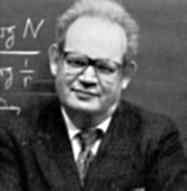| Benoit Mandelbrot, the father of Fractal Geometry, dies |
| Saturday, 16 October 2010 | |||
|
Benoit Mandelbrot, the Franco-American mathematician who explored a new class of mathematical forms known as "fractals" has died at age 85 in Cambridge, Massachusetts.
Professor Emeritus of Yale University, Benoit Mandelbrot was born in Poland in 1924. His family moved to France when he was a child, and he was educated there. He spent the latter part of his life living and working in the United States and was a dual French and American citizen. His wife, Aliette Mandelbrot, told the New York Times that he died on 14 October of pancreatic cancer in a hospice.
His seminal book, "The Fractal Geometry of Nature" published in 1982, holds that irregular mathematical objects previously discarded as "pathological" are actually a reflection of nature. The fractal geometry developed would be used to measure natural phenomena such as clouds and coastlines and of course gave countless hours of fun to programmers who created software to explore the Mandelbrot set. Although some of the basic ideas of fractals were known before Mandelbrot's work he was more or less responsible for turning the idea into respectable mathematics. What is perhaps less well known is that Mandelbrot was something of a polymath with contributions to subjects such as geology, cosmology and engineering. His masters was in aeronautics and he studied for a postdoctoral degree under Von Neumann. He later worked at Thomas J Watson Research Center where he published most of the work on fractals that he is known for. To sum up Mandelbrot's life we can do no better than use his own words: “If you take the beginning and the end, I have had a conventional career,” he said, referring to his prestigious appointments in Paris and at Yale. “But it was not a straight line between the beginning and the end. It was a very crooked line.” Further reading
|
|||
| Last Updated ( Saturday, 16 October 2010 ) |

